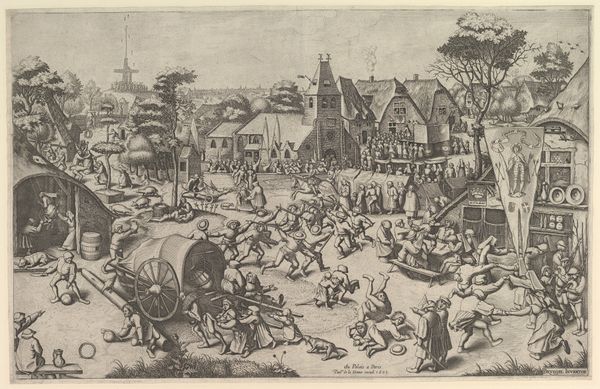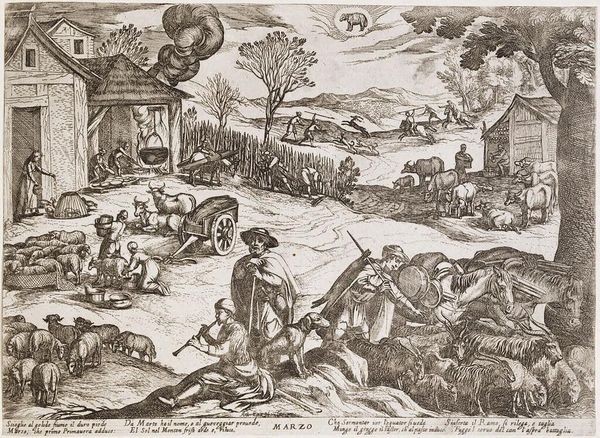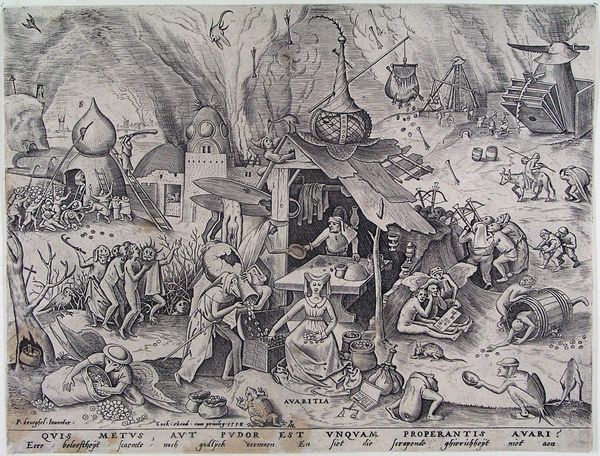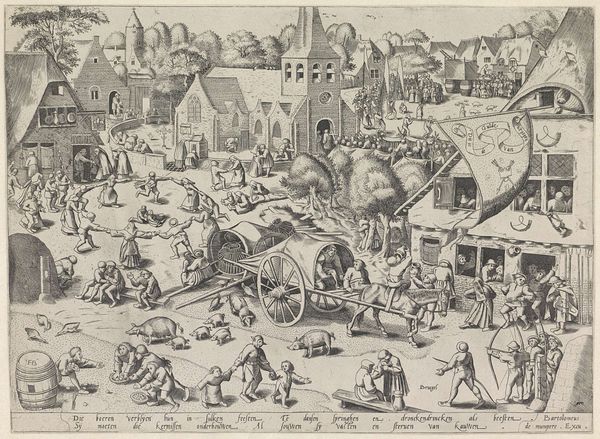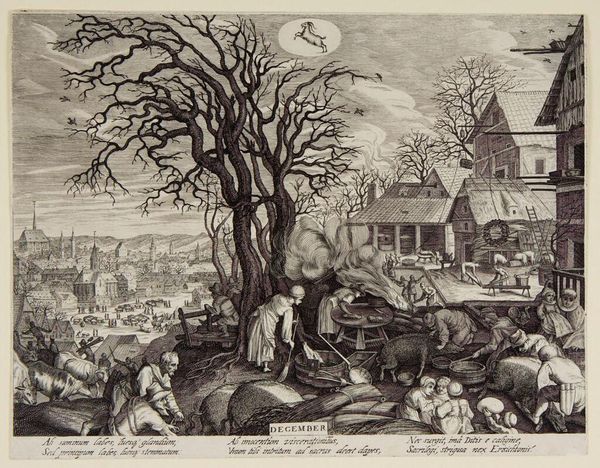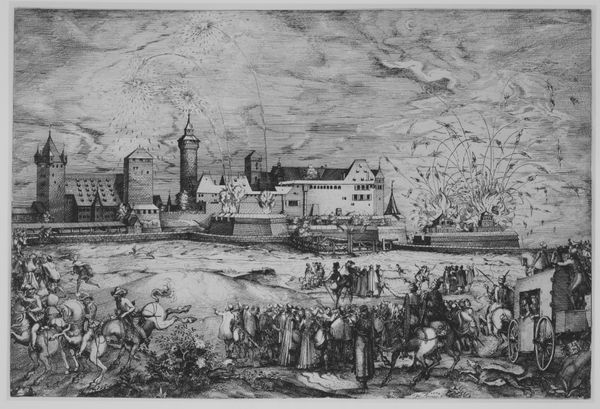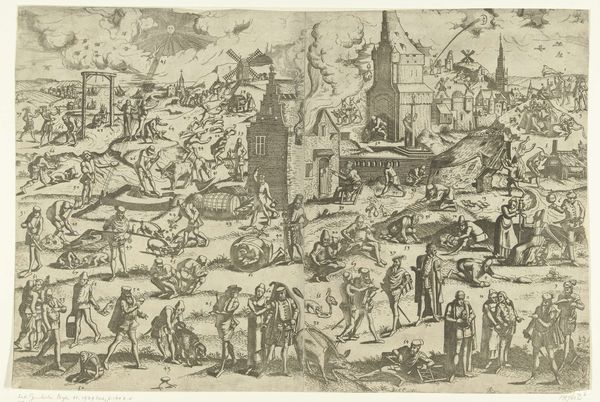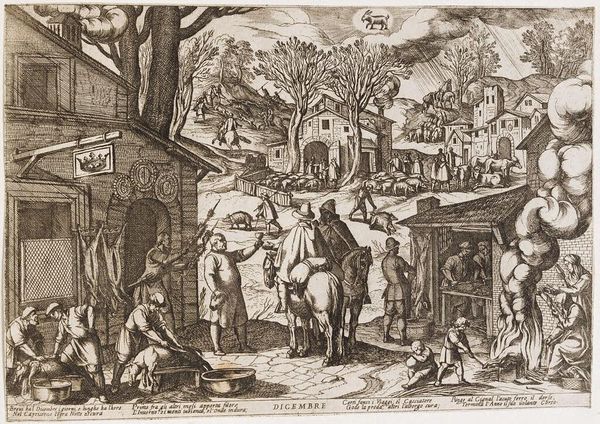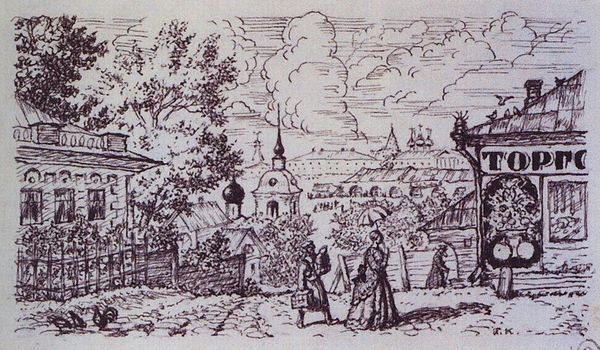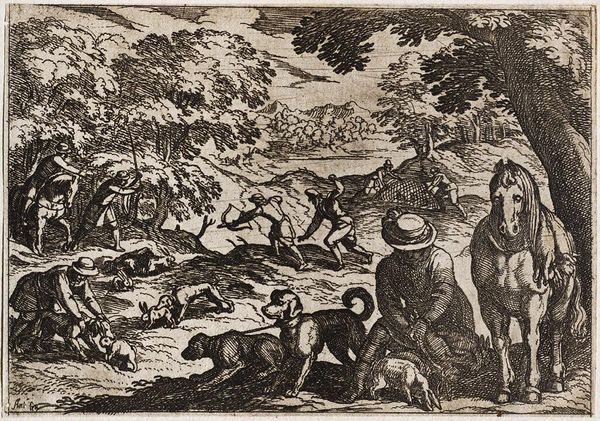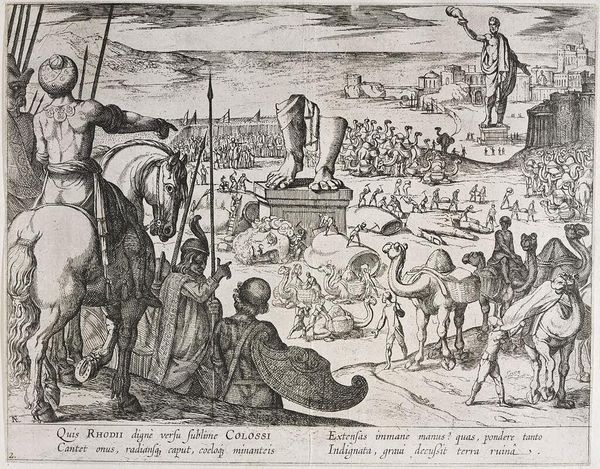
drawing, print, ink, woodcut, engraving
#
drawing
#
ink drawing
#
narrative-art
# print
#
landscape
#
figuration
#
ink
#
ink drawing experimentation
#
folk-art
#
woodcut
#
line
#
cityscape
#
genre-painting
#
northern-renaissance
#
engraving
#
realism
Dimensions: 33.6 x 52.4 cm
Copyright: Public domain
Curator: This is "The Fair on St. George's Day," an ink drawing and woodcut created in 1561 by Pieter Bruegel the Elder. Editor: It's overwhelmingly detailed! A chaotic scene unfolds with so much energy in every direction. It almost feels like I'm observing some strange performance on a meticulously constructed stage. The printmaking process, given its date, would have been intensive. Curator: Indeed, printmaking at that time was a labor-intensive practice that relied on craftsmanship and the collaboration between artists, publishers, and distributors to reach audiences across Europe. This is not a painting for the elite, but a commodity of art. Editor: Absolutely, I'm considering how each line had to be carved painstakingly into the woodblock. The social element is so visible in the work; from preparing materials and distributing them. It's far removed from the solitary act that we so closely associate with fine art, or at least its marketing. You can really see Bruegel documenting popular pastimes and recording their interactions with each other, as well as everyday tools and architectural details. Curator: Precisely. Bruegel was deeply engaged in representing the lived experiences of ordinary people. Here we see an idealized vision, as the fairs of this era were central components in society. The work blends the celebration of the Saint and also allows a certain free transgression as can be noted with its festival atmosphere. Editor: Seeing this level of detail in ink alone— the varying weights of lines used to describe everything from human figures to buildings — makes the technical skill so palpable, even five centuries later. There is clear intent for this piece to be made cheaply so many people can purchase it and also show their piety and devotion. Curator: And prints like these certainly helped shape social views and contributed to how communities defined themselves through celebrations and shared identities. Thanks to technological innovations, works of art could be easily bought and seen by different populations in different corners of the continent. Editor: Thinking about the many stages of labor, this print feels like a rich testament to the material conditions of its production, revealing much about social and cultural priorities of the era, wouldn't you agree? Curator: I certainly would. The role of public art in 16th century Europe created and mirrored a reflection of the everyday lived lives of these communities.
Comments
No comments
Be the first to comment and join the conversation on the ultimate creative platform.
